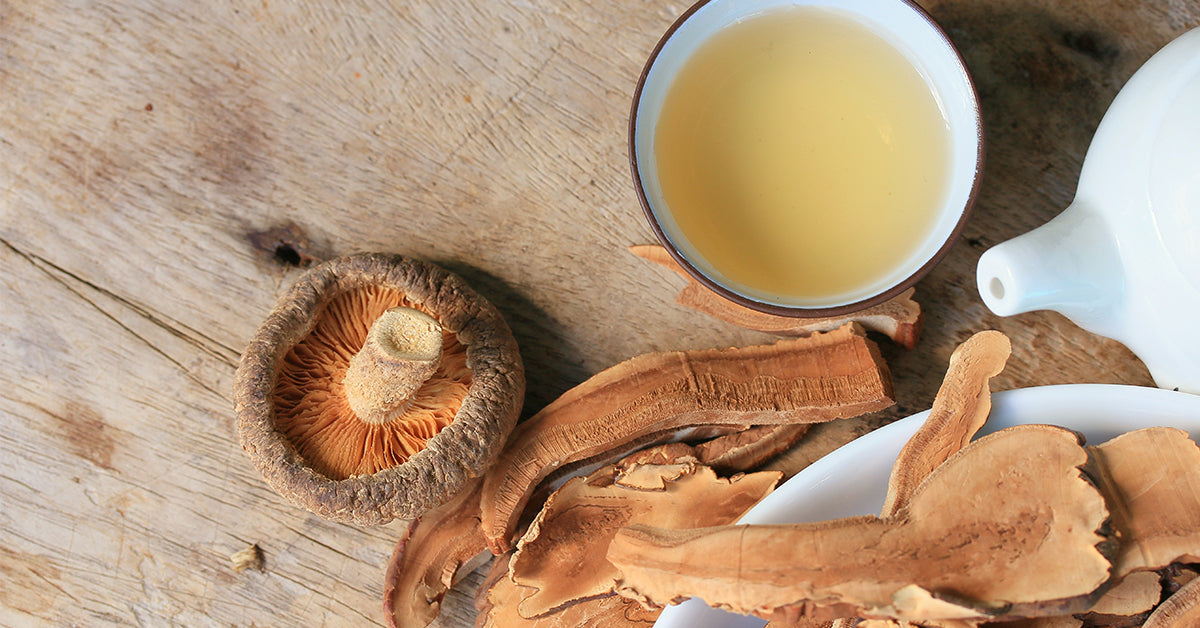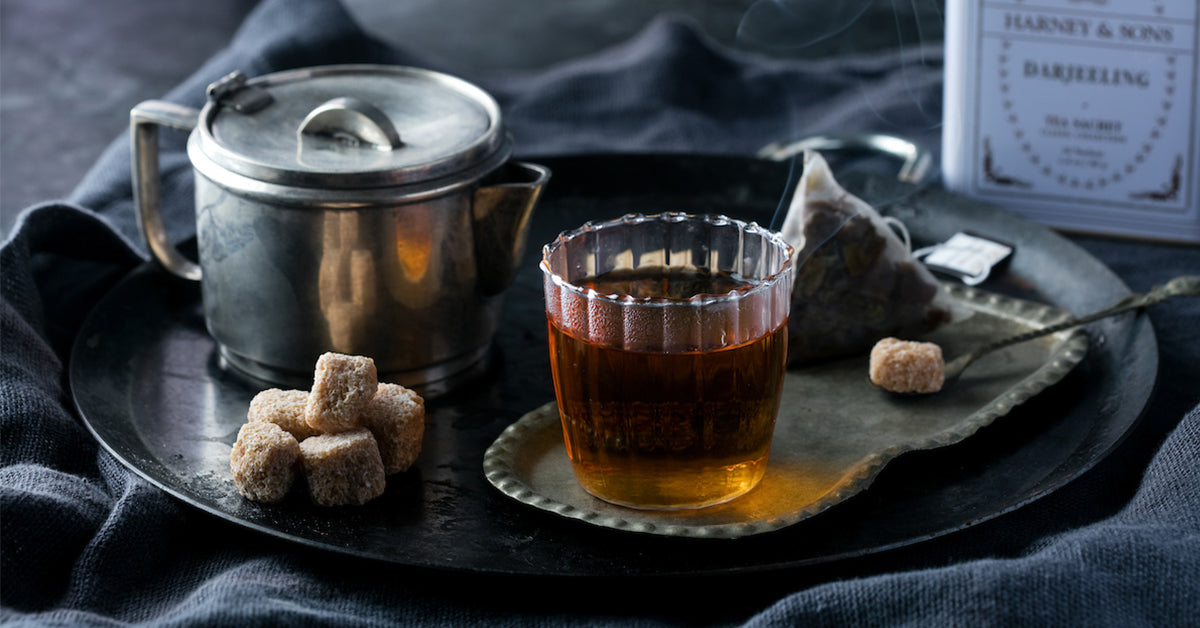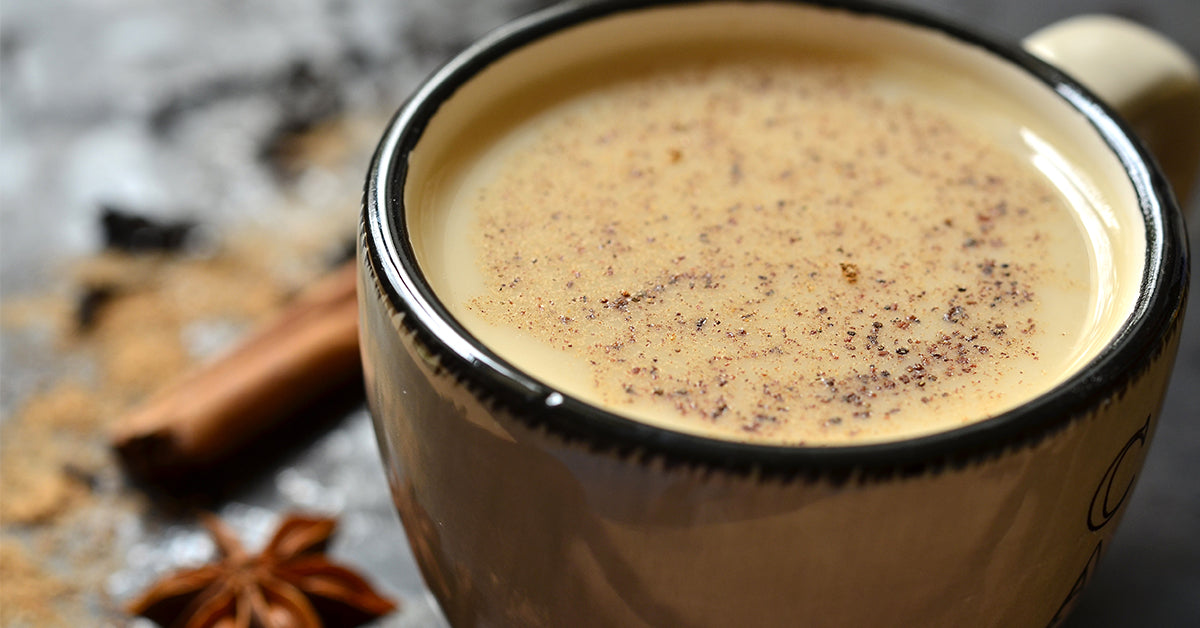We know, we know. Mushroom tea. “What will those people at Harney come up with next?” you’re thinking. “Avocado tea?” Well, as a matter of fact...but this blog isn’t about avocado tea. It’s about mushroom tea.
They’re the Little Fungi That Can
Like tea, mushrooms have long been valued in Eastern culture. They were used in ancient times for medicinal properties and were often used in tea in early Chinese medicine. But before you go grabbing those button mushrooms in your fridge and steeping them in some hot water, you need to know that not all fungi are created equal.
Due to their individual health benefit properties, there are four primary mushrooms that are used in making mushroom tea:

Reishi. Sometimes called “the mushroom of immortality,” reishi mushrooms are thought by many to help enhance the immune system, reduce stress and fatigue and improve sleep.

Lion mane. Named because their appearance is similar to the downy softness of a lion’s mane, these mushrooms have been associated with improving cognitive function.

Cordyceps. These Chinese mushrooms are thought to boost energy, and teas or supplements containing this mushroom are often used before exercise. If you want to be grossed out, watch Planet Earth’s short video on how cordyceps grows. It’s pretty amazing and unbelievable...and rather gross.

Chaga. Chaga mushrooms are bursting with antioxidants, which protect us from damage done by free radicals and, like the other three mushrooms listed, is classified as an adaptogen, which means it has properties that help our bodies adapt to stress. Adaptogens work by calming the central nervous system and mitigating our response to cortisol, the stress hormone.
Because chaga mushrooms are the ones contained in our Harney mushroom teas, we’re going to focus on learning more about these little powerhouses of health benefits.
It Doesn’t Have to Be Pretty to Be Good For You
Chaga is a slow-growing, non-toxic fungus that is found on birch trees in colder climates around the world (a much more benign process than how/where cordyceps grows!). Sometimes called the Herb of Kings or Gift from God, chaga has been valued for its nutrients, immune-boosting antioxidants and adaptogenic elements for thousands of years. Even knowing that, if you saw it in its natural state, growing on the side of a birch tree, ingesting it would be the last thing you’d think of.

The exterior of the chaga mushroom looks like burnt charcoal. Inside, however, it is orange/golden brown. While you may be able to harvest it by hand, it’s not like picking mushrooms at all. The exterior is hard and often requires the use of a knife or small axe to extract a chunk of chaga. Once harvested, it is cut into smaller pieces and dried. For tea, the dried chaga is ground into a fine powder which ends up the same golden brown color as the interior. And that is how an odd-looking chunk of hard, black fungus growing on the side of a birch tree ends up in your tea cup!
Harney Mushroom Teas
We offer three types of mushroom tea at Harney:
Chaga Mushroom. The name says it all: this is simply ground chaga mushroom. You make a cup of Chaga Mushroom much like you would make matcha: add the powder to hot water and whisk. The taste of chaga mushroom tea, again, isn’t like steeping button or portobello mushrooms in hot water. Chaga mushrooms have a rather earthy flavor with a hint of bitterness. However, it also contains vanillin, the same property found in vanilla beans, so has a hint of vanilla. If drinking it straight isn’t your thing, we offer two other options.
Chaga Wonder. We named this tea Chaga Wonder because, with all the amazing ingredients, it’s no wonder it’s so awesome! We packed this tea with hemp flowers and hemp leaves (grown by our sister company, The Hemp Division), coconut pieces, chaga mushroom, ashwagandha root (another powerful adaptogen), chamomile, lemon balm, spearmint and lavender.
Chaga Chai. Chai lovers, you can also reap the benefits of chaga mushrooms while enjoying the one-of-a-kind flavor of chai. Made with chaga mushroom, wakaya ginger, cinnamon, coconut pieces, cardamom and nutmeg, the traditional chai spices pair extremely well with the earthy flavor of chaga.

If you haven’t yet tried mushroom tea, we hope we’ve given you reason to give this unique, beneficial tea a go. Let us know what you think in the comment section below.





2 comments
Nancy L Dolman
The two mushroom tea sound like something I might enjoy
The two mushroom tea sound like something I might enjoy
Brad Kaiser
I have the Chai Variety tea but would like to know what is the best way to prepare a proper cup? So often I end up with fine particles left in my cup I feel like I must be doing something wrong.
Thanks
I have the Chai Variety tea but would like to know what is the best way to prepare a proper cup? So often I end up with fine particles left in my cup I feel like I must be doing something wrong.
Thanks